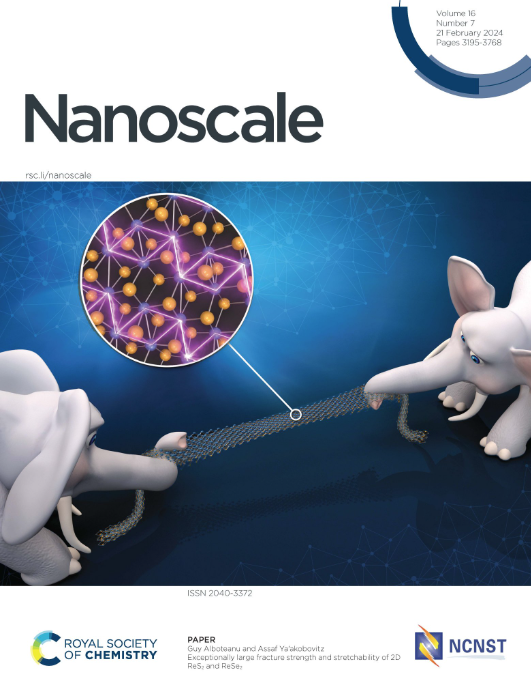Bulk and Surface Defect Manipulation of the ZnO ETL for All-inorganic CsPbBr3 Perovskite Solar Cells
IF 5.8
3区 材料科学
Q1 CHEMISTRY, MULTIDISCIPLINARY
引用次数: 0
Abstract
Electron transport layer (ETL) in the traditional CsPbBr3 perovskite solar cells (PSCs) without hole transport layer (HTL) presents the capability to transport electrons and to block hole transport, which radically affects the photovoltaic performance of PSCs. However, ZnO ETL prepared by classic sol-gel method exhibits obvious drawbacks, such as serious interfacial recombination reaction, inducement of oxygen vacancy (VO) and zinc interstitials (Zni). Herein, we demonstrate that alkali metal chloride (e.g. KCl), serving as the passivating agent for the surface and bulk phase, can promote surface modification and doping in ZnO ETL, respectively. The experimental results show that the interaction between K+ and Zn2+, and the occupation of VO by Cl-, suppress the internal defect states of ZnO films, which enhances the crystal coordination between ZnO and CsPbBr3, and improves the film morphology as well as the quality of the upper perovskite (PVK) films. The experimental PSCs based on the doping approach have achieved the champion power conversion efficiency (PCE) of 9.22%, which ranks the highest PCE of (FTO/ITO)/ZnO /CsPbBr3/Carbon structure. Moreover, the unpackaged devices of the two experimental PSCs still maintain 97.15% and 74.76% of the original PCE after 28 days exposed in the ambient environment, showing the powerful effect of KCl on the regulation of surface and bulk phase defects in the ZnO ETL.全无机CsPbBr3钙钛矿太阳能电池ZnO ETL的体积和表面缺陷处理
传统CsPbBr3钙钛矿太阳能电池(PSCs)中没有空穴输运层(HTL)的电子输运层(ETL)具有输运电子和阻挡空穴输运的能力,从根本上影响了PSCs的光伏性能。然而,传统的溶胶-凝胶法制备的ZnO ETL存在界面复合反应严重、氧空位(VO)和锌间隙(Zni)的诱导等缺点。在此,我们证明了碱金属氯化物(例如KCl)作为表面和体相的钝化剂,可以分别促进ZnO ETL的表面改性和掺杂。实验结果表明,K+与Zn2+的相互作用以及Cl-对VO的占据抑制了ZnO薄膜的内部缺陷态,从而增强了ZnO与CsPbBr3之间的晶体配位,改善了薄膜的形貌和PVK (upper钙钛矿)薄膜的质量。采用掺杂方法制备的PSCs获得了9.22%的冠军功率转换效率(PCE),是FTO/ITO /ZnO /CsPbBr3/Carbon结构中PCE最高的。此外,两种实验PSCs的未封装器件在环境中暴露28天后仍保持原PCE的97.15%和74.76%,显示了KCl对ZnO ETL表面缺陷和体相缺陷的强大调节作用。
本文章由计算机程序翻译,如有差异,请以英文原文为准。
求助全文
约1分钟内获得全文
求助全文
来源期刊

Nanoscale
CHEMISTRY, MULTIDISCIPLINARY-NANOSCIENCE & NANOTECHNOLOGY
CiteScore
12.10
自引率
3.00%
发文量
1628
审稿时长
1.6 months
期刊介绍:
Nanoscale is a high-impact international journal, publishing high-quality research across nanoscience and nanotechnology. Nanoscale publishes a full mix of research articles on experimental and theoretical work, including reviews, communications, and full papers.Highly interdisciplinary, this journal appeals to scientists, researchers and professionals interested in nanoscience and nanotechnology, quantum materials and quantum technology, including the areas of physics, chemistry, biology, medicine, materials, energy/environment, information technology, detection science, healthcare and drug discovery, and electronics.
 求助内容:
求助内容: 应助结果提醒方式:
应助结果提醒方式:


